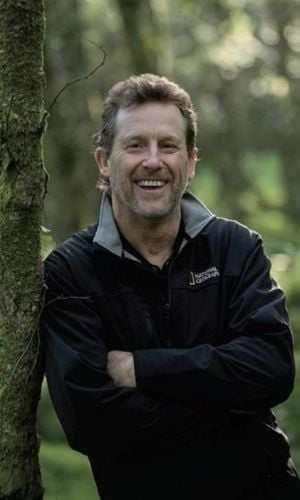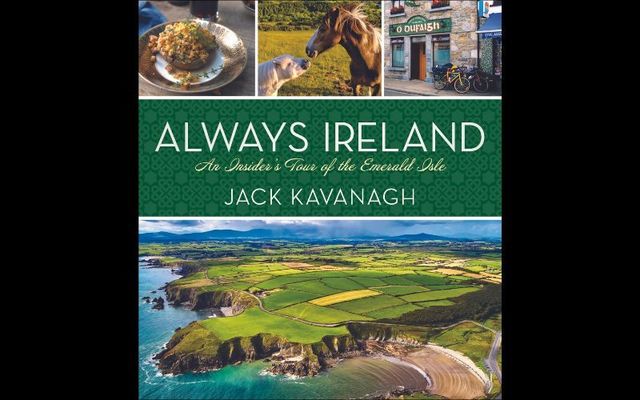If you travel there seeking the soul of Ireland, you’ll find many clues in the island’s stunning landscapes. The spirit of the world’s only Celtic nation resounds in the dolmens and ancient burial chambers of ancient kings and chieftains, and it lingers along the rugged coastlines dotted with offshore islands where Gaelic-speaking communities keep its language alive.
These days, of course, you can also thrill to Ireland’s natural beauty, or learn the native language, or study its rich history on the internet; the Irish have long since colonized cyberspace as storytellers supreme, just as they did with the English language and English literature. The imaginatively inclined Irish have a talent for reinvention.
Walk the streets of Dublin and you’ll soon realize that the way many Irish people greet each other is not “How are you?” but “What’s the story?”

Are you planning a vacation in Ireland? Looking for advice or want to share some great memories? Join our Irish travel Facebook group.
Everywhere you go, Ireland’s landscapes and landmarks are shaded by its storied past. The island’s historic shaping by outsiders still haunts the ruins of ancient Norman castles scattered across this fertile land and lives on in Dublin’s finest architecture, from the Customs House to the city’s Georgian houses.
Psychogeographers—travelers through landscapes with psychic senses on full alert—quickly become mired in Ireland’s mythical, historical, and storytelling traditions.
I tried it myself recently, walking through Galway with a local historian. We were soon lost in a fog of local legends about the visit of JFK, in the poetic flights of fancy of WB Yeats, and in fantastic folkloric tales about the Otherworld, the magical realm of the fairies.
Of course, there are few people as connected to the spiritual realm as the Irish. Even in exile, the Gael is spirited toward the future by past accomplices. The Irish-American actor Gabriel Byrne named his recent memoir Walking With Ghosts.
But this Celtic closeness to the spiritual world is not just nostalgic. It also lends the Irish imagination a liberating advantage. Since pagan times, the Irish have held an indefatigable belief in the power of the imagination. Irish myths are filled with dreamt-up worlds such as Tír na nÓg (the Land of Eternal Youth), where life is eternally brighter than here on our rain-plagued island. Ancient Irish saints honored the Christian tradition of the Green Martyrdom, an ascetic retreat into nature to get closer to God. Irish monks retreated to places such as Clonmacnoise and Glendalough, complete with round tower refuges, to reimagine the gospels in word and illustration, preserving Christianity as the Dark Ages enveloped Europe.
Later, Irish poets, including Yeats, retreated into towers where they invoked new spirit worlds into a rich heritage of literature, most of it in their conquerors’ language. In the late 1970s a gang of young Dubliners, bored by the bland anonymity of suburbia, dreamt up an alternative reality called “Lypton Village,” and gave themselves colorful names such as Bono Vox, The Edge, Gavin Friday, and Guggi. Out of this rock’n’roll dreamscape sprung U2. Bono later bought a Martello Tower in my hometown of Bray and beat his own artistic retreat. One of the songs composed there, “Promenade,” celebrates reaching the spiritual “higher ground” via the “spiral staircase” of the imagination.
When the Irish don’t like the world they are living in, they simply make up another one to inhabit imaginatively. It helps in exile, of course. The Gael’s ease of movement between the real and the imaginary is doubtless the foundation for the nation’s astonishing overachievement in the arts. A small island of just 5 million, Ireland boasts four Nobel prizewinners in Literature: William Butler Yeats (1923), George Bernard Shaw (1925), Samuel Beckett (1969), and Séamus Heaney (1995).
A curious traveler will find many clues to the Irish soul in the country’s rich literature, its music, and its song; these days, you’ll also enjoy Ireland’s storytelling traditions in more contemporary forms such as film, comedy monologues, and television dramas.
Every year, I get to share Ireland’s glorious landscapes, its bountiful culinary delights, and its engrossing musical and storytelling traditions with happy travelers on National Geographic Expeditions’ tours. To find the very essence of Ireland, I encourage guests to spend an hour or two just listening to the Irish talk. And you never have to go too far to hear the Irish talk.
The Irish are, at heart, a race of indefatigable storytellers and the best place to eavesdrop among them is the local pub. The public house in Ireland is a uniquely Gaelic institution that is part drinking emporium, part social center, part music hall, part private parlor, and, if it boasts a snug and a trustworthy barman, part secular confessional box.

Looking for Irish book recommendations or to meet with others who share your love for Irish literature? Join IrishCentral’s Book Club on Facebook and enjoy our book-loving community.
My own “local” is Bray’s Harbour Bar, which is all these things, with the added attraction of an in-house “chipper.” Fish and chips washed down with creamy stout followed by a Jameson’s on the rocks is my own taste of home. The Harbour is just a short walk from Bono’s tower, incidentally. The higher ground is never far away in Ireland.
Opening this book, I hope, will be like visiting your favorite Irish pub: Cracking its covers should evoke a wall of noise as the revelers within make a happy racket on a Friday night, when the local band—céili, country, or rock’n’roll—is in full flow; there you might spot Bono and Enya, or Christy Moore and Shane MacGowan, near the stage discussing favorite Irish songs; in the snug, Willie Henry, the Galway seanchaí (Gaelic storyteller) and historian, might be spinning folktales; there’s Fionnán O’Connor, the garrulous academic, over in the far corner intriguing all with insights into Irish whiskey; the vinegary smell of chips and cod deep-fried in batter wafts in from the courtyard, where an Irish wolfhound is charming scraps from admiring diners; and the chatty barman is asking where you’re from, and telling you of his time spent “over beyond” in London, or “across in America,” as you wait for the creamy head to settle on your Guinness.
You’re always welcome here. This is Always Ireland.
Sláinte!
*Jack Kavanagh emigrated from Dublin in 1995 to work first in London, then the USA. He is author of National Geographic’s Complete National Parks of Europe and Always Ireland, and a guest lecturer on NatGeo Expeditions’ Tales and Treasures of the Emerald Isle tours.
Author Jack Kavanagh




Comments